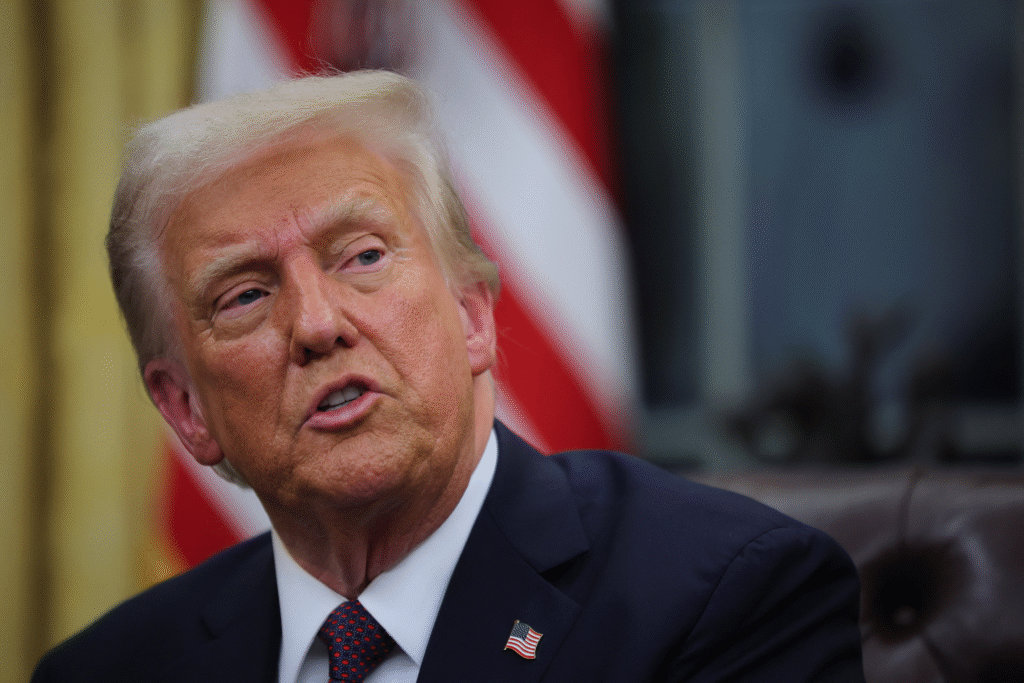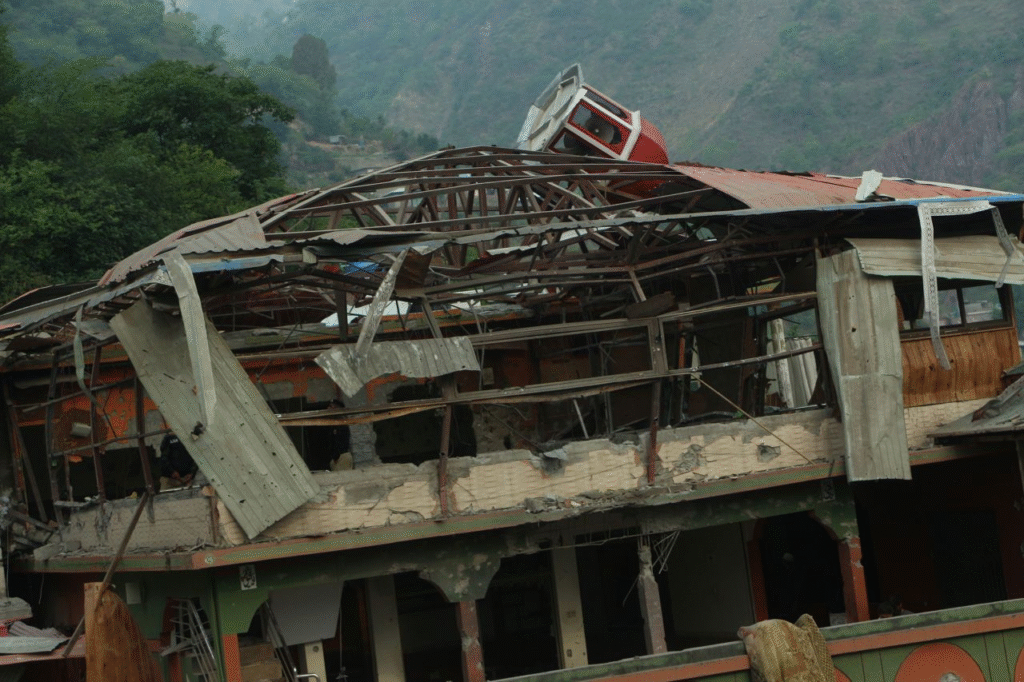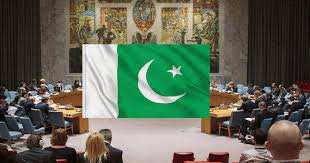India-Pakistan Agree on US-Mediated Ceasefire
Recent Developments
On May 10, 2025, India and Pakistan agreed to a “full and immediate ceasefire” to end days of intense military clashes.
The announcement came from US President Donald Trump on his Truth Social platform, followed by confirmations from both nations’ officials. The ceasefire, effective from 5:00 PM IST, halts all military actions on land, air, and sea. US Secretary of State Marco Rubio and Vice President JD Vance played key roles in mediating the talks.

The agreement also includes plans for both countries to start discussions on various issues at a neutral location soon. This truce marks a significant de-escalation between the nuclear-armed neighbors, raising hopes for stability in the region.
The ceasefire followed a tense period of cross-border attacks, with both sides blaming each other for starting the violence. The breakthrough was welcomed by leaders and citizens in both countries. In Pakistan, people in cities like Lahore celebrated, chanting slogans of national pride.
In India, political leaders called for unity and urged the government to ensure the ceasefire holds. The agreement has paused a conflict that threatened to spiral into a larger war, but challenges remain to sustain the peace.
Background of the Conflict
The India-Pakistan rivalry is rooted in decades of disputes, primarily over the Kashmir region. The two nations have fought multiple wars and engaged in frequent border skirmishes since their partition in 1947.
The latest escalation began after a terrorist attack on April 22, 2025, in Pahalgam, Jammu and Kashmir, which killed 26 civilians, mostly tourists. India blamed Pakistan-based terrorists for the attack, while Pakistan denied any involvement.

Chudary Naseer/Anadolu/Getty Images
This incident triggered a series of retaliatory actions, including India’s “Operation Sindoor” on May 7, which involved precision airstrikes on alleged terrorist sites in Pakistan and Pakistan-occupied Kashmir (PoK).
Pakistan responded with drone attacks and artillery fire along the Line of Control (LoC), violating a 2021 ceasefire agreement.
Over the past month, Pakistani forces breached the truce around 15 times, killing 13 civilians and injuring 59 in Jammu and Kashmir. India’s strikes and Pakistan’s counterattacks raised fears of a broader conflict, given both nations’ nuclear capabilities. The international community, particularly the US, grew alarmed as the situation worsened, prompting urgent diplomatic efforts to prevent further escalation.
Four Days of Escalation
The four days leading to the ceasefire were marked by rapid escalation. On May 7, India launched Operation Sindoor, targeting nine terrorist sites in Pakistan and PoK.
The operation was a direct response to the Pahalgam attack, with India claiming it struck infrastructure used for cross-border attacks. Pakistan condemned the strikes as an act of aggression and retaliated with drone attacks on Indian military facilities the following night.
By May 8, both sides were engaged in heavy exchanges, with Pakistan using artillery in four LoC sectors and India responding with equal force.
On May 9, tensions peaked as both militaries attacked each other’s facilities, including air bases and civilian infrastructure. Pakistan’s Foreign Minister Ishaq Dar signaled openness to de-escalation but only if India ceased further attacks.
Meanwhile, India reported civilian casualties and damage along the LoC, accusing Pakistan of targeting non-military sites. The violence prompted widespread concern, with the US and other global powers calling for restraint. By May 10, the situation was critical, with both nations on high alert and the risk of a wider war looming.
The US played a pivotal role in brokering the ceasefire, reversing an initial stance of non-intervention. On May 8, Vice President JD Vance had stated the conflict was “none of our business,” but the rapid escalation prompted a policy shift.
Over 48 hours, Rubio and Vance engaged in intense diplomacy, holding talks with Indian Prime Minister Narendra Modi, Pakistani Prime Minister Shehbaz Sharif, and other top officials, including India’s External Affairs Minister S Jaishankar and Pakistan’s Army Chief Asim Munir. Trump announced the ceasefire on May 10, claiming it resulted from a “long night of talks” mediated by the US.
US Mediation Efforts
India, however, clarified that the ceasefire was bilaterally negotiated, with Pakistan’s Director General of Military Operations (DGMO) contacting India’s DGMO at 3:35 PM IST on May 10 to agree on halting all actions. Sources suggest the US leveraged economic pressure, including Pakistan’s reliance on a $1 billion IMF aid package, to push for de-escalation. Rubio’s statement on X confirmed the agreement and emphasized future talks at a neutral site. The US intervention, while controversial, was crucial in bringing both sides to the table, showcasing a blend of diplomatic persuasion and economic influence.
Provisions of the Ceasefire
The ceasefire agreement is comprehensive but temporary, aimed at halting immediate hostilities. Key provisions include:
- Immediate Halt to Military Actions Both nations agreed to stop all firing and military operations on land, air, and sea, effective from 5:00 PM IST on May 10. This was formalized through direct communication between the DGMOs of India and Pakistan.
- Bilateral Monitoring The DGMOs will speak again on May 12 to ensure compliance and address any violations. Orders to enforce the ceasefire have been issued to troops on both sides.
- Future Talks India and Pakistan will begin discussions on a “broad set of issues” at a neutral location, though the agenda and timeline remain unspecified. This provision aims to address underlying disputes, including Kashmir and cross-border terrorism.
- Suspension of Indus Waters Treaty Despite the ceasefire, the Indus Waters Treaty remains suspended, with India continuing to withhold data and advancing river projects. This indicates unresolved tensions beyond the military truce.
- No Third-Party Mediation India emphasized that the ceasefire was worked out directly with Pakistan, rejecting claims of exclusive US mediation. This reflects India’s preference for bilateral solutions, though US involvement was acknowledged.
The ceasefire provides relief for civilians affected by the violence and opens a window for dialogue. However, its success depends on both nations’ commitment to avoiding provocations. In India, political leaders like Congress’s Jairam Ramesh called for an all-party meeting to build consensus, while Jammu and Kashmir Chief Minister Omar Abdullah urged relief efforts for affected communities.
Pakistan’s Foreign Minister Ishaq Dar reiterated his country’s desire for peace without compromising sovereignty. While the truce is a positive step, the suspension of the Indus Waters Treaty and ongoing distrust suggest that lasting peace requires sustained diplomatic efforts.


 The Smell of Scandal: Trump’s Perfume Controversy
The Smell of Scandal: Trump’s Perfume Controversy  Pakistan Assumes UNSC Chair
Pakistan Assumes UNSC Chair  DRC President May Nominate Trump for Nobel Peace Prize
DRC President May Nominate Trump for Nobel Peace Prize  Why Is Trump Doubling Down on a US-India Trade Agreement?
Why Is Trump Doubling Down on a US-India Trade Agreement?  Why Zohran Mamdani Faces Accusations of Anti-India Sentiment
Why Zohran Mamdani Faces Accusations of Anti-India Sentiment  Zelenskyy Goes Formal for Trump After Oval Office Tensions
Zelenskyy Goes Formal for Trump After Oval Office Tensions